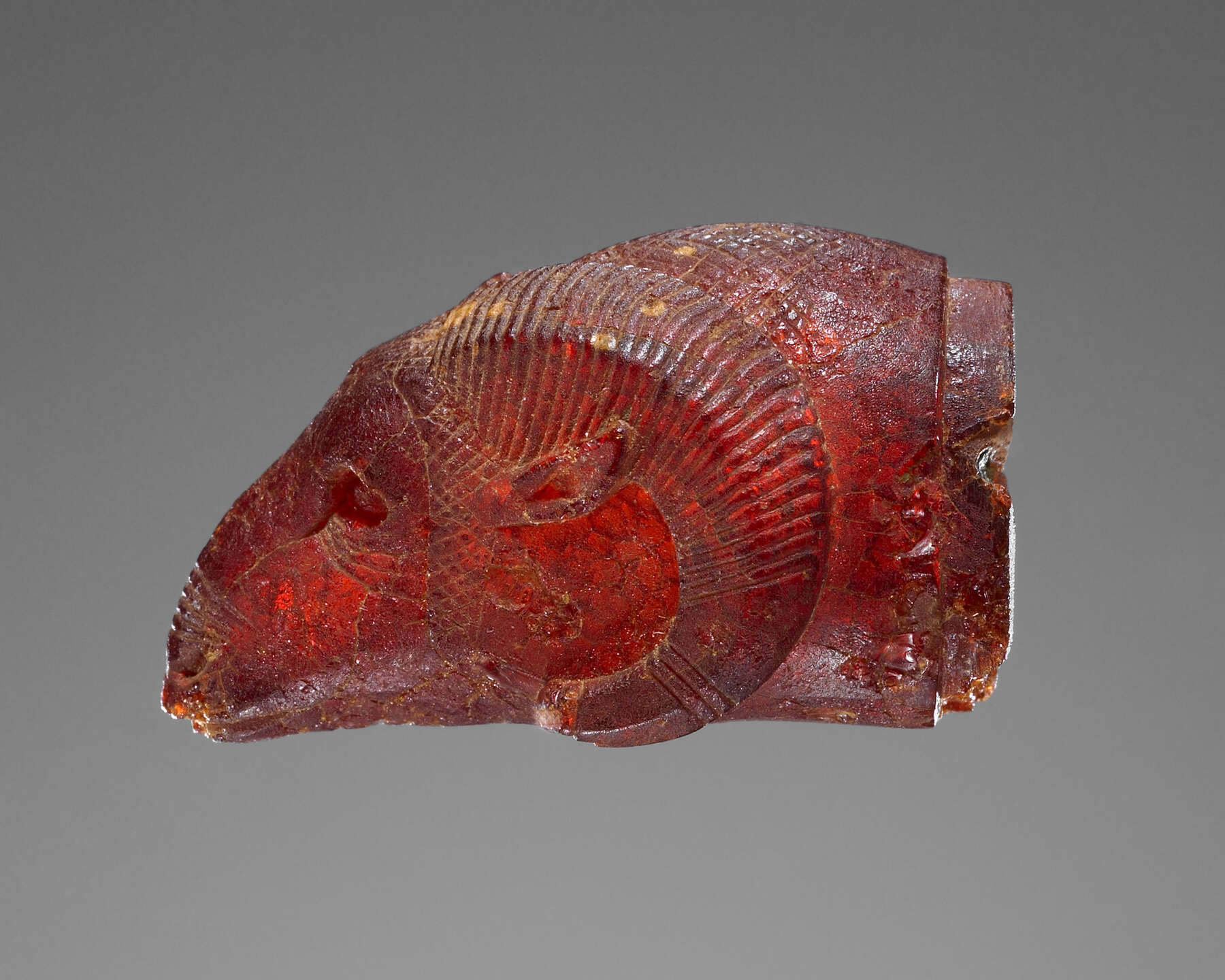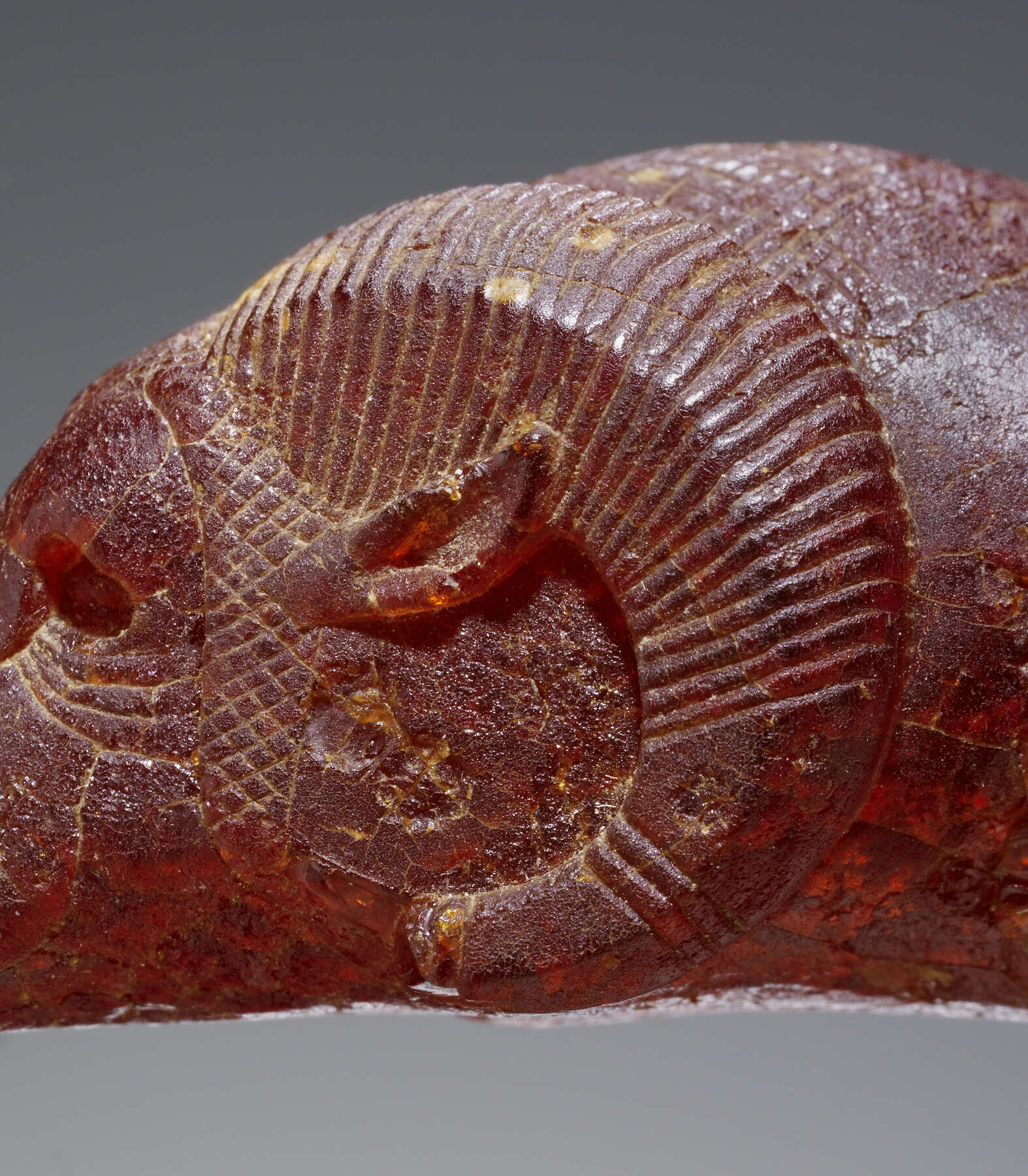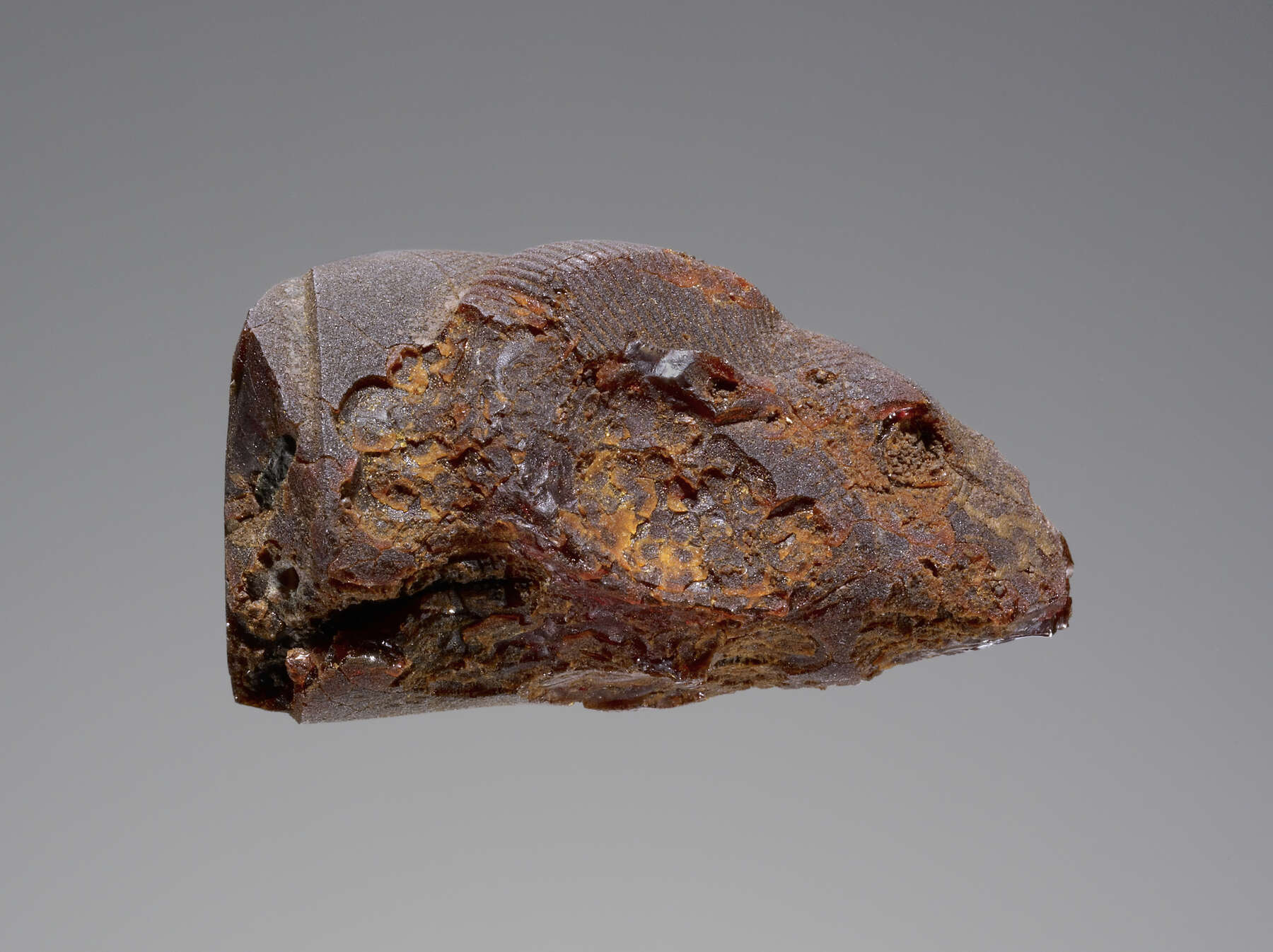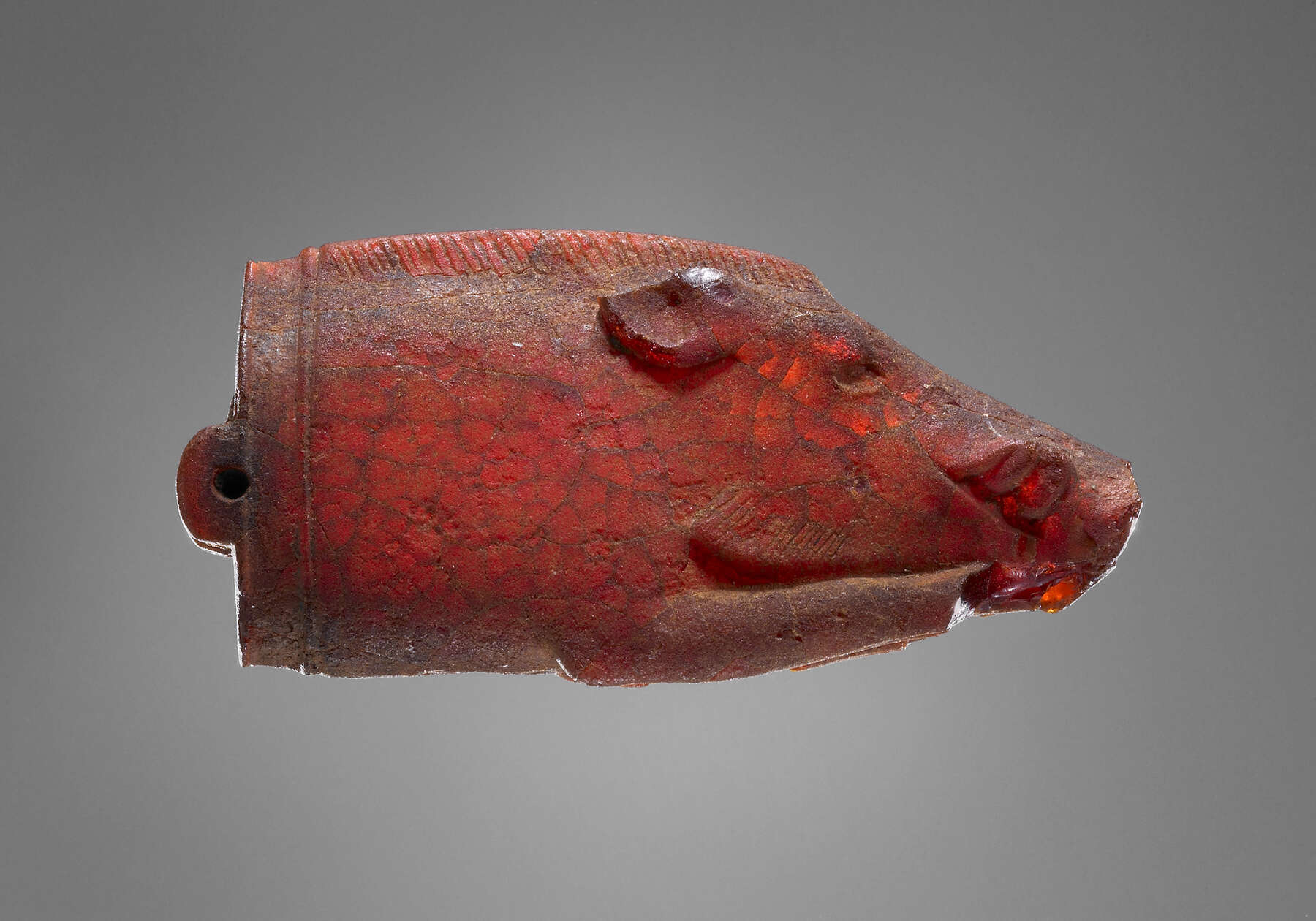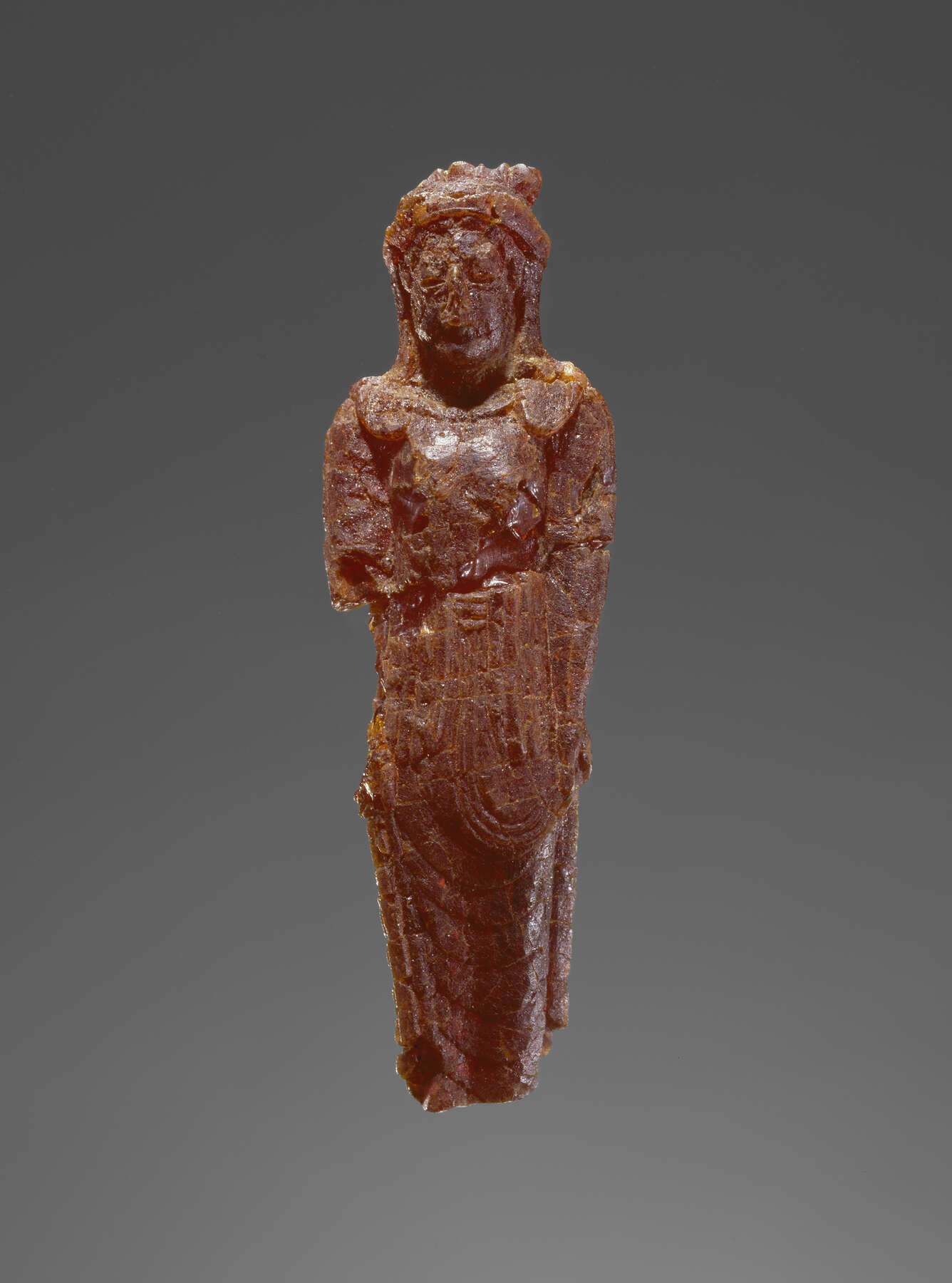39. Pendant: Ram’s Head
| Accession Number | 76.AO.82 |
| Culture | Etruscan |
| Date | 525–480 B.C. |
| Dimensions | Length: 36 mm; width: 20 mm; depth: 18 mm; Weight: 9 g |
| Subjects | Ionia, Greece (also Ionian, Greek); Jewelry; Ram |
Provenance
–1976, Gordon McLendon (Dallas, TX), donated to the J. Paul Getty Museum, 1976.
Condition
The pendant is in good condition, with only minor modern chipping at the animal’s right horn (at the base) and on the lower lip and right jaw. The surface is sound, but there is considerable crazing and many areas where small flakes have chipped off. The caudal edge at the base plate has been rabbeted, most likely to fit into a now-missing metal mount. Part of the back has been broken off, revealing two plugged bores embedded with the remains of metal (silver?) wire or pins. Traces of metal corrosion product surround the attachments. The surface is red-orange, and under strong light the core of the amber appears transparent and bright red-orange. No inclusions are evident. There are some tiny patches of yellowish residue on the surface.
Description
The ram is extraordinary for its morphological specificity. The zygomatic process arches upward in a dramatic, swelling curve, and the eye sockets are deeply drilled. It is possible that inlaid eyes were originally inserted in these cavities. At the inner corner of the eye, three lines indicate folds of flesh below the eye. The ears are sharply raised from the surface of the horn. Five lines are incised across the lower nose and slope down toward the mouth. The nostrils are carved in shallow relief.
Finely spaced diagonal cross-hatching defines the fleece on both poll and cheeks. The horns are relieved from the cap of fleece. Regular, evenly spaced ridges are incised for two-thirds of the length of the horn, three more lines are indicated at the midpoint of the remaining third, and one last ring circles the tip of the horn. The horn tips splay away from the face. The pattern of ridges is meticulously rendered, with a gentle undulation in the line; the spacing between the ridges narrows from the base toward the tip.
The anatomical detail of this pendant, combined with the interplay in the surface pattern and the precision in artisanship, marks this as the work of a master artisan. The counterpoint created by the placement of the curved, striated pattern of the ridges of the horns adjacent to the reticulated cross-hatching of the fleece offers but one example of the maker’s careful attention to detail.
Unpolished tool marks lie deep in the curve of the horns; this was perhaps done to create shading. In other areas that would have been more difficult to finish, such as the sharp angle of intersection between the rings of the horns and the fleece, the tool marks are polished out.
Discussion
This head of a ram may have come from the same original context as four other pendants in the Getty collection. The five—76.AO.82 (this ram’s head), the rams’ heads (cat. no. 40) and (cat. no. 41), the foreparts of a boar pendant (cat. no. 37), and the kore pendant (cat. no. 8)—share a similar state of conservation, technique, and style. All have very similar hollowed-out eyes and show a similar use of the graver and of polishers. The kore pendant is attributed here to a South Ionian artisan, or to one trained with an artisan from the area, on the basis of comparison to terracottas and marbles. There is no such corresponding body of material for the other four pedants.
The three rams’ heads are very much alike, and although generally similar to many other amber rams or rams’ heads, they have no close counterparts. These three are comparable in the deep V-shape of the horns on the top of the head, the deep relief of the fleece from the neck, and the wavy, closely spaced ridges of the horns. The ridges of and have the same pattern of spacing. The representation of the fleece is identical on 76.AO.82 and (it may once have been the same on the more worn example ). A filament threaded through a perforation in the collar area suspended the ram’s head . The decorative suspension device is very like that of the boar and kore pendants. The other two rams’ heads, 76.AO.82 and , must have been set into metal mounts, for they both have broken bores that once held metal pins (the breaks may have been caused by the expansion of metal corrosion products over the long period of the burial). It is possible that 76.AO.82 and were originally carved with incorporated devices and that the metal mounts are later additions.
